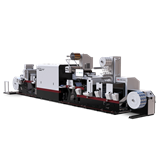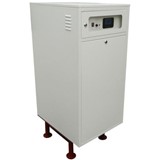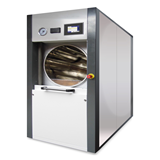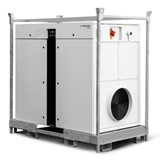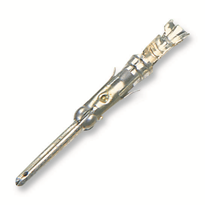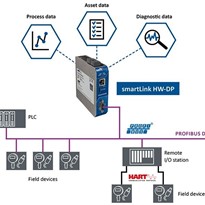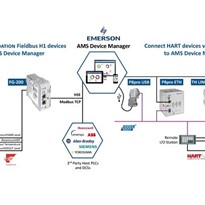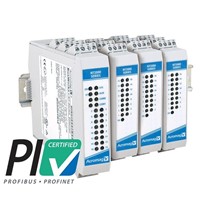ODOT offers a reliable, affordable, and readily available Remote I/O solution for simplifying industrial connectivity. In this article, we will explore the key benefits of ODOT Remote I/O and guide you through the steps to harness its power. From selecting the right communication protocol and I/O modules to understanding the significance of industrial connectivity, we’ll cover it all.
Before diving into ODOT Remote I/O products, we will answer some of the most common questions on who will benefits from ODOT Remote I/O, when to implement it, and the importance of industrial connectivity.
Who Will Benefit from ODOT Remote I/O?
ODOT Remote I/O is designed to meet the needs of various industries and applications including but not limited to:
- Manufacturing plants;
- Process industries;
- Automation systems; and
- Infrastructure projects.
Any industry that require a seamless industrial connectivity can all benefit from this advanced solution. By providing a flexible range of communication protocols and a wide selection of I/O modules, ODOT Remote I/O caters to the diverse requirements of industries such as automotive, pharmaceuticals, food and beverage, energy, and more. Whether you need to monitor and control digital signals, analog data, or specialised inputs like temperature or encoder signals, ODOT Remote I/O has the right solution for you.
When to Implement ODOT Remote I/O?
The ideal time to implement ODOT Remote I/O is now! As industries become increasingly digitised, efficient and reliable connectivity is crucial for staying competitive. If you are experiencing communication gaps, unreliable data, or limitations with your current connectivity infrastructure, it’s time to consider ODOT Remote I/O as soon as possible. Additionally, when planning new industrial projects or upgrading existing systems, incorporating ODOT Remote I/O ensures a future-proof solution that can adapt to evolving technological advancements.
The Importance of Industrial Connectivity
Industrial connectivity plays a pivotal role in maximising operational efficiency, reducing downtime, and increasing profitability. In real-life scenarios, lack of connectivity can result in significant profit losses. For example, in the manufacturing industry, communication breakdowns between production lines and control systems can lead to costly production delays, equipment failures, and quality issues.
We’ve covered an article on revolutionising maintenance from reactive to proactive, learn more on how condition-based maintenance can save your industrial network HERE.
In the energy sector, poor connectivity can hinder the effective monitoring and control of critical infrastructure, leading to inefficiencies and safety concerns. According to a report by Accenture, power outages in the U.S. alone cost businesses an estimated $27 billion annually.
Furthermore, in process industries such as oil and gas, inadequate connectivity can disrupt data flow, impede remote monitoring capabilities, and compromise safety. The lack of real-time insights and control can result in costly accidents and environmental damage.
How can ODOT Remote I/O help in overcoming, aiding, and preventing losses due to connectivity issues?
- Seamless Connectivity
ODOT Remote I/O ensures seamless connectivity by providing a reliable and robust communication infrastructure. With a wide range of communication protocols such as PROFINET, Ethernet/IP, EtherCAT, ModbusTCP, PROFIBUS, and ModbusRTU, ODOT ensures compatibility with existing industrial networks. By eliminating communication gaps and breakdowns, ODOT Remote I/O helps prevent production delays, equipment failures, and quality issues that can lead to significant profit losses.
- Real-Time Monitoring and Control
With ODOT Remote I/O, companies gain real-time visibility into their industrial processes. The system enables remote monitoring and control of critical parameters, allowing for immediate response and preventive actions. By detecting anomalies and addressing issues proactively, ODOT helps prevent costly accidents, equipment damage, and environmental hazards that can have devastating financial consequences.
- Enhanced Data Accuracy and Reliability
ODOT Remote I/O ensures accurate and reliable data acquisition from sensors and devices across the industrial network. Reliable data is crucial for making informed decisions and optimising operations. By providing high-quality data, ODOT helps prevent errors in production planning, inventory management, and resource allocation.
- Increased Efficiency and Productivity
By streamlining industrial connectivity, ODOT Remote I/O improves overall operational efficiency and productivity. The system enables faster and more efficient data transmission, reducing response times and enabling real-time decision-making. This efficiency leads to optimised production processes, reduced downtime, and increased throughput, ultimately preventing revenue losses.
- Future-Proof Solution
ODOT Remote I/O is designed to adapt to evolving technological advancements. The system’s modular architecture allows for easy scalability and flexibility, accommodating changing business needs. By investing in ODOT Remote I/O, companies ensure a future-proof solution that can grow and adapt alongside their operations, preventing the need for costly infrastructure overhauls in the long run.
Conclusion
Industrial connectivity is vital for seamless operations, optimised efficiency, and increased profitability. ODOT Remote I/O offers a reliable and cost-effective solution to simplify industrial connectivity. By selecting the appropriate communication protocol and I/O modules, businesses can tailor their connectivity infrastructure to meet specific requirements. The time to implement ODOT Remote I/O is now, as the lack of industrial connectivity can lead to significant profit losses and operational inefficiencies.
Investing in ODOT Remote I/O is not just about connectivity; it’s about future-proofing your operations and staying ahead in an increasingly connected world.
In conclusion, ODOT Remote I/O helps companies overcome connectivity issues, aids in preventing profit losses, and enhances operational efficiency. By offering seamless connectivity, real-time monitoring and control, reliable data, increased efficiency, and a future-proof solution, ODOT plays a vital role in ensuring smooth and profitable industrial operations.
Ready to simplify your industrial connectivity using ODOT Remote I/O? Here are three EASY steps for you to take today!
Step 1: Select Your Communication Protocol:
ODOT Remote I/O supports a wide range of communication protocols, ensuring compatibility with various industrial networks. Choose from options such as:
- PROFINET
- Ethernet/IP
- EtherCAT
- ModbusTCP
- PROFIBUS
- ModbusRTU
This flexibility allows you to seamlessly integrate ODOT Remote I/O into your existing network infrastructure, providing a seamless and efficient connectivity solution.
Step 2: Select Your I/O:
Tailor your industrial connectivity needs by selecting the appropriate I/O modules offered by ODOT Remote I/O. With options as follows:
– 16-channels Digital Input
– 16-channels Digital Output
– Mixed 8 inputs/8 outputs
– 8-channels Analog Input
– 4-channels Analog Output
– Temperature (Thermocouple or RTD)
– Encoder – 2 Channel
– And many more
You can customise your system to meet specific requirements. The versatility of ODOT Remote I/O modules ensures that you have the right tools to monitor and control your industrial processes effectively.
Step 3: Contact Us for More Information:
Ready to simplify your industrial connectivity with ODOT Remote I/O?
Contact our team of experts to learn more about the benefits, features, and implementation of ODOT Remote I/O.
Our knowledgeable professionals will provide you with the information and support you need to make an informed decision. Whether you have technical queries or require assistance with system integration, our dedicated team is here to help.








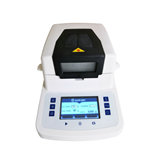
-160x160-state_article-rel-cat.jpg)

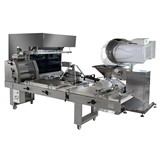


-160x160-state_article-rel-cat.jpg)
-160x160-state_article-rel-cat.png)

-160x160-state_article-rel-cat.png)


